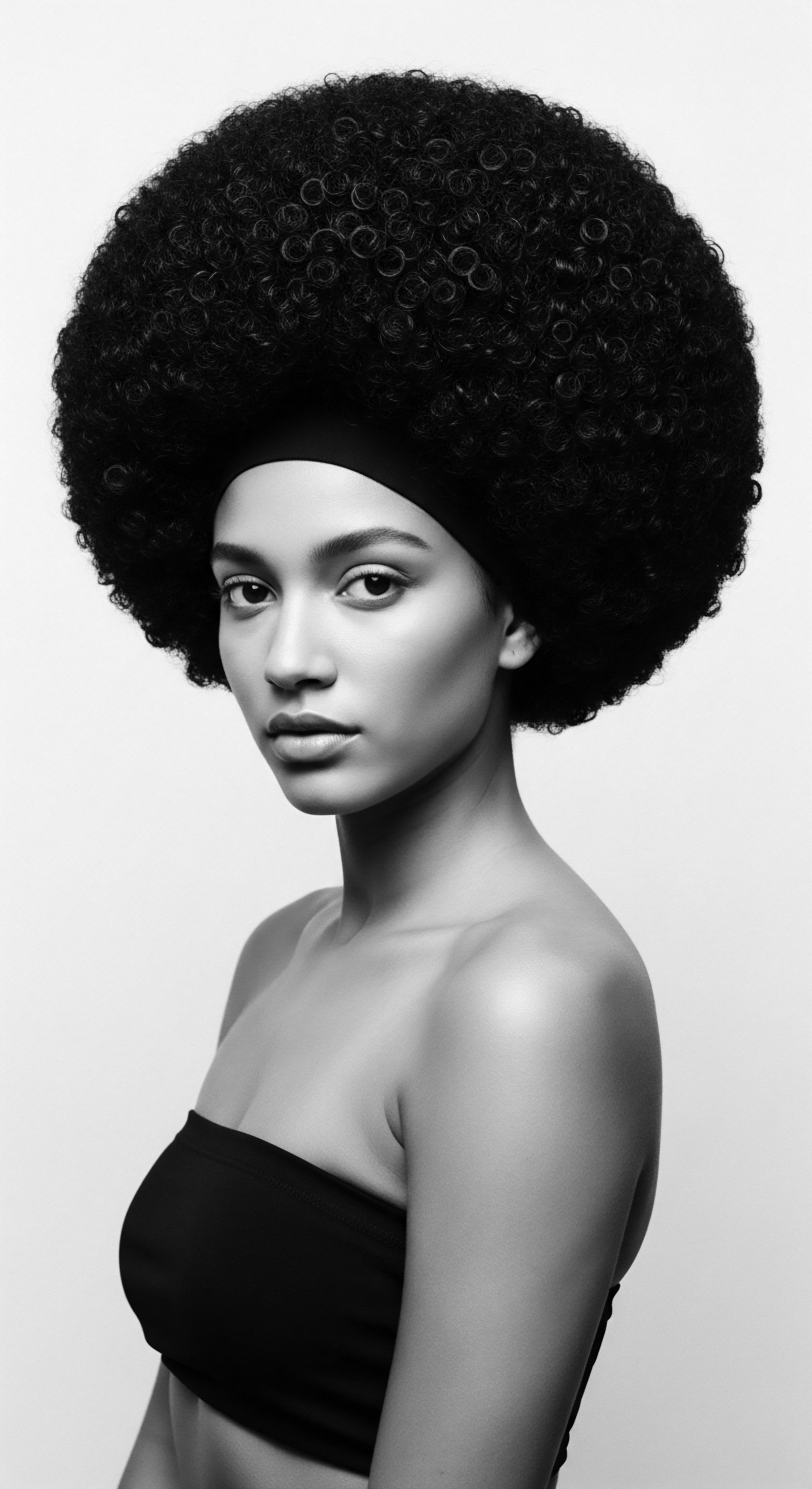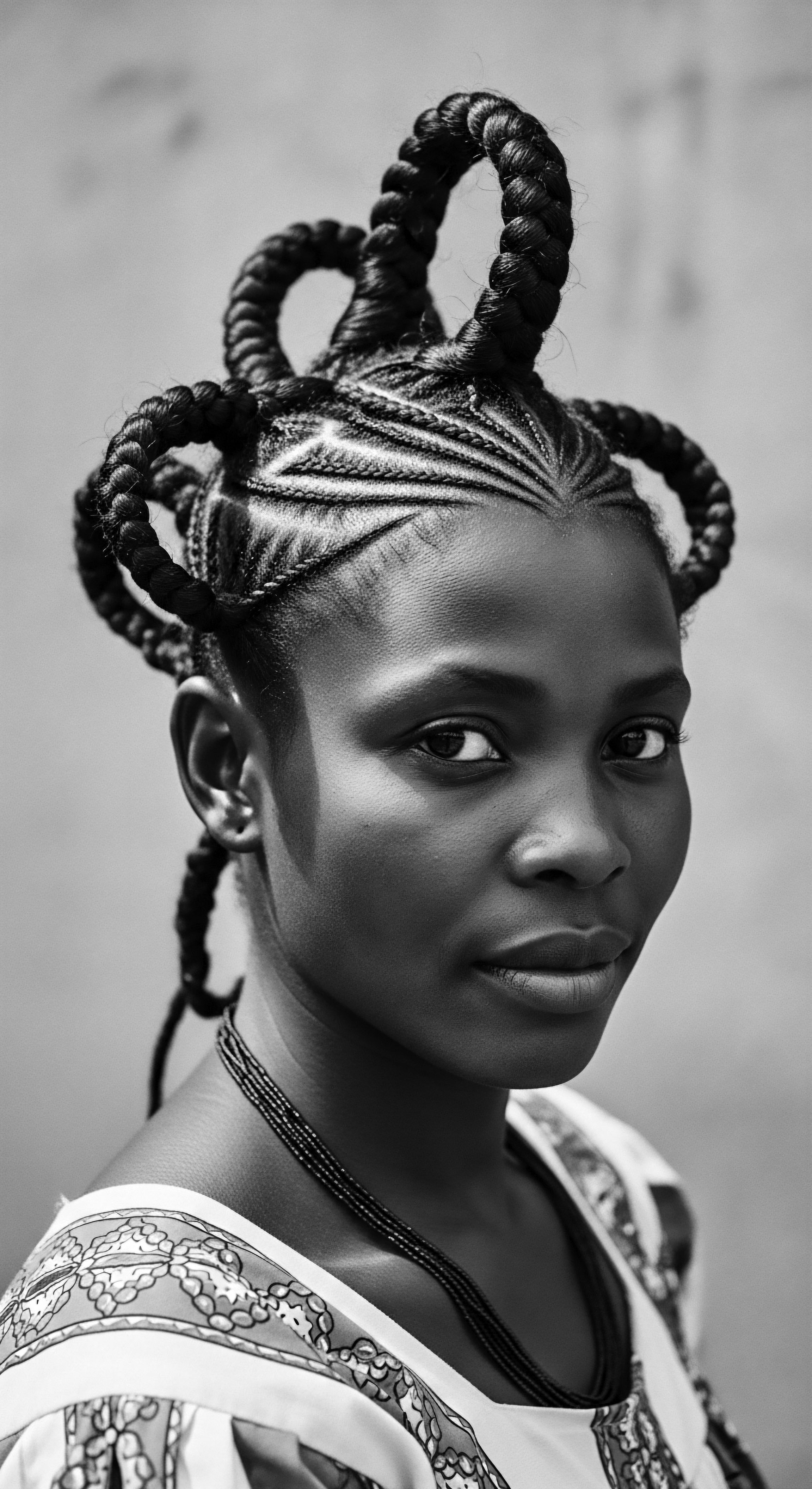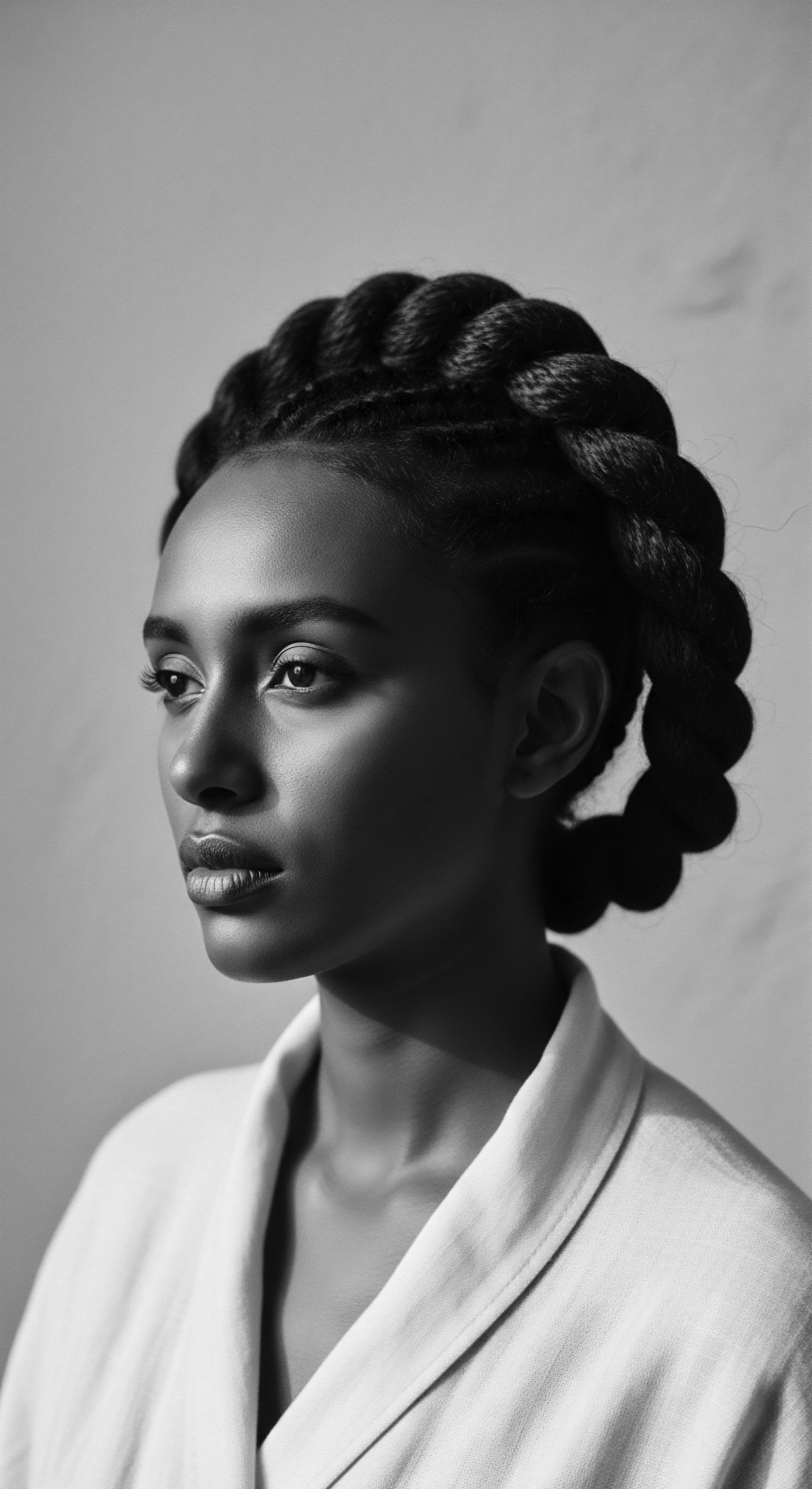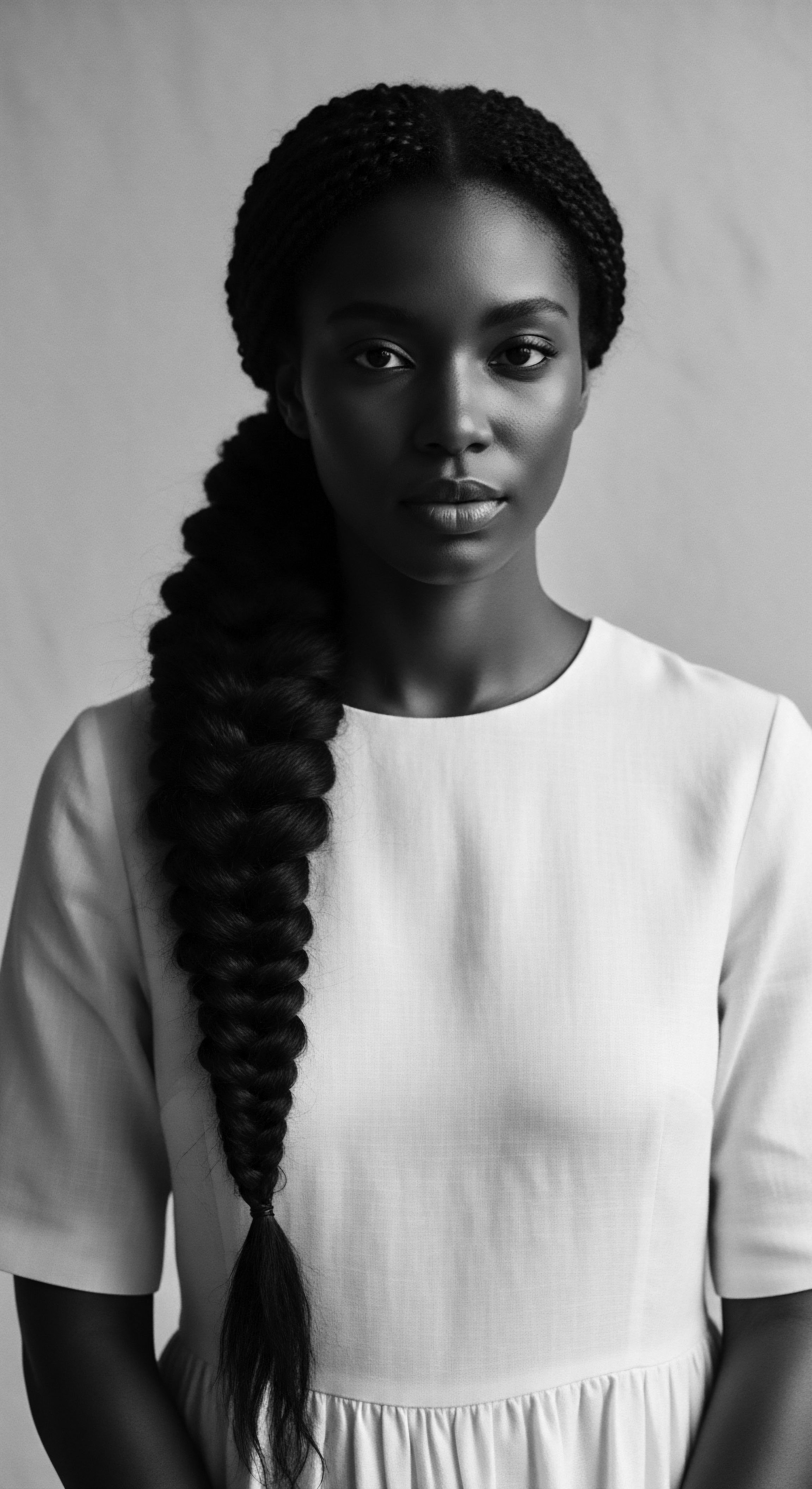
Roots
To stand upon the earth, rooted and aware, is to comprehend that every coil and strand upon one’s head carries the memory of ages past. This question of how textured hair heritage connects ancestral care to modern identity is not a fleeting curiosity; it is a profound resonance within the collective spirit of those whose ancestry reaches back to the sun-drenched lands of Africa and across the diaspora. It speaks to the very soul of a strand, a delicate yet powerful filament holding genetic code and cultural lore. Our hair, in its myriad shapes and dispositions, is a living archive.
It whispers tales of resilience, of wisdom passed through generations, and of an enduring legacy that refuses to be silenced or confined. When we consider the care given to textured hair, we are not simply discussing superficial acts; we are witnessing a continuation of practices born of deep understanding, honed by necessity, and imbued with communal significance. These ancestral methodologies, far from being relics of a distant past, inform and elevate our contemporary understanding of textured hair, grounding modern identity in a rich, vibrant history.

Hair’s Ancestral Blueprint
The very structure of textured hair, with its unique helical twists and varying curl patterns, holds within it the indelible mark of adaptation and environment. From the earliest human communities in Africa, hair characteristics developed in response to climate and sun. Tightly coiled curls, for example, afforded protection from the intense equatorial sun, creating a natural shield for the scalp while helping to regulate body temperature. The elliptical shape of the hair follicle, a biological distinction of textured hair, produces these distinctive coils, allowing for hair that resists tangling and breakage when properly tended.
This elemental biology, a gift from our ancestors, dictates much about how textured hair behaves and what it requires for healthy growth. Understanding these foundational aspects, often explored through scientific disciplines like trichology, illuminates why certain traditional care practices were so effective.
Textured hair is a living archive, its coils carrying the whispers of ancestral resilience and wisdom.
For generations, the knowledge of these unique hair properties was not recorded in textbooks but lived within communal practice. Elders, particularly women, served as the living encyclopedias of hair lore. They understood the necessity of gentle handling, the delicate balance of moisture, and the intrinsic strength of the strand when nurtured with natural elements. The very lexicon we use today to describe textured hair, while sometimes influenced by external classification systems, can find its deepest meaning in the ways African and diasporic communities named and celebrated their hair’s varied expressions.

Hair Anatomy and Its Heritage Echoes
The anatomy of textured hair, often characterized by its elliptical follicle shape and lower number of disulfide bonds compared to straight hair, results in a fiber with distinctive attributes. This anatomical makeup predisposes textured hair to greater fragility and a tendency toward dryness, a direct consequence of the twists and turns hindering the natural flow of sebum down the hair shaft. Ancestral care practices, without the aid of modern scientific instruments, intuitively addressed these very characteristics.
They centered on emollients like shea butter, derived from the African shea tree, or plantain extracts, which provided lipid replenishment and moisture sealing. These botanical choices were not arbitrary; they were generations-deep responses to the hair’s intrinsic needs.
The diversity within textured hair is expansive, defying simplistic categorization. Historically, within various African societies, hair styles and textures communicated complex social cues. A person’s tribe, age, marital status, or even social standing could be discerned from the way their hair was styled. In some communities, specific patterns might denote a period of mourning, or a rite of passage.
This stands in stark contrast to more recent classification systems that sometimes inadvertently reduce the spectrum of textured hair to a numerical or alphabetical type, disconnected from its cultural genesis. The traditional understanding recognized a profound interconnectedness between the hair, the individual, and their community.
| Aspect of Hair Hair Protection |
| Ancestral Understanding Achieved via styling, oils, and covering. Recognizes vulnerability to sun, dust, and handling. |
| Modern Scientific Observation Microscopic analysis confirms cuticle lifting with damage, UV radiation impact, and mechanical stress effects. |
| Aspect of Hair Moisture Retention |
| Ancestral Understanding Applied butters, plant extracts, and natural oils. Noticed hair's capacity for dryness. |
| Modern Scientific Observation Confirms low sebum travel on coiled shafts, need for humectants and occlusives to maintain water content. |
| Aspect of Hair Strength and Weakness |
| Ancestral Understanding Practices like communal grooming to prevent breakage, knowing where strands might be weakest. |
| Modern Scientific Observation Identifies points of stress along the helix, areas prone to fracture, and the role of protein/moisture balance. |
| Aspect of Hair Hair as Identity |
| Ancestral Understanding Symbol of tribal affiliation, age, marital status, spiritual connection, and social standing. |
| Modern Scientific Observation Acknowledges hair as a psychosocial marker, influencing perception, self-esteem, and social acceptance. |
| Aspect of Hair The enduring wisdom of ancestral practices often aligns with current scientific findings on textured hair properties. |

Ritual
The ways in which textured hair is cared for and adorned often transcend mere aesthetics. They ascend to the level of ritual, practices steeped in meaning, community, and memory. This is where ancestral care truly begins to intertwine with the formation of modern identity.
The hands that detangle, braid, or anoint are not just performing a task; they are carrying forth generations of learned gestures, infused with the intention of well-being and a recognition of hair as a sacred extension of self. From communal grooming sessions under ancestral trees to the quiet, private moments of self-care today, the ritual of textured hair care forms an unbroken chain of heritage.

Styling as a Living Chronicle
Within numerous African societies before the transatlantic slave trade, hairstyles were vibrant communicators. They conveyed a person’s geographic origin, their marital status, age, ethnic belonging, religious ties, wealth, and position within the community. For example, among the Yoruba people of Nigeria, specific braided patterns or head adornments could signify a woman’s marital status or even her connection to a particular deity. This cultural practice meant that hair was never simply about superficial appearance; it was a living chronicle of one’s place in the world.
(Matjila, 2020) This deep connection meant hair styling was a significant communal event. Families and friends would gather, sharing stories and wisdom while hours were spent meticulously washing, oiling, braiding, or twisting hair. This tradition of shared care persists, though perhaps in altered forms, where salons and home gatherings remain vital spaces for connection and cultural exchange.
The forced migration during the transatlantic slave trade brought a brutal disruption. The deliberate shaving of heads upon arrival in the “New World” aimed to strip enslaved Africans of their identity and heritage. Yet, the ingenuity and resilience of the people meant that these practices adapted. Cornrows, in particular, took on covert but vital new roles.
In a powerful historical instance from colonial Colombia, enslaved African women would braid secret escape routes into their cornrows, using specific patterns as maps and signals for freedom fighters like Benkos Biohó. These intricate designs, hidden in plain sight, carried coded messages, symbolizing acts of rebellion and methods of survival against oppressive systems.
Hair styling, a practice of deep cultural communication, transcended oppression to become a symbol of hidden resistance and coded survival.

How Do Ancient Styling Practices Echo in Contemporary Hair Art?
The ancient art of hair manipulation finds its echoes in contemporary styling. What we call “protective styles” today, such as braids, twists, and locs, are direct descendants of these ancestral techniques. Their original purpose was both aesthetic and functional ❉ to guard the hair against environmental elements, minimize manipulation, and preserve length. Modern science now validates these ancestral intuitions, recognizing that such styles help reduce breakage and promote hair health by maintaining moisture and reducing daily mechanical stress.
Consider the widespread adoption of traditional tools, albeit sometimes modernized. Fine-tooth combs, derived from ancient carving traditions across Africa and Egypt, find their parallels in the wide-tooth combs and detangling brushes essential for modern textured hair care. The persistent popularity of natural oils and butters, such as shea butter and coconut oil, which have been used for centuries in West Africa, demonstrates a continuity of ingredient choice based on their proven efficacy. These aren’t trends; they are rediscoveries and re-affirmations of generations-old wisdom.
- Braids ❉ From the symbolic cornrows used for communication during enslavement to modern expressions of style and protection.
- Twists ❉ A versatile technique found in various African communities, offering a low-tension way to define curls and shield ends.
- Locs ❉ A historically significant style with roots in various African cultures, often holding spiritual and philosophical meaning.
- Coil Sets ❉ A contemporary approach that mirrors the natural curl definition celebrated in traditional coiling techniques.

Wigs and Extensions ❉ Historical Layers
The story of wigs and hair extensions in textured hair heritage is also a long one, pre-dating modern fashion trends by millennia. Ancient Egyptians, for example, wore elaborate wigs made from human hair and plant fibers, adorned with precious materials, signifying status, wealth, and even religious devotion. Priests in Ancient Egypt, in particular, kept their heads shaved for ritual purity but often wore wigs. These were not simply decorative; they provided protection from lice and the sun.
This historical precedent helps reframe the use of extensions today, not as a purely contemporary invention, but as a continuation of an ancient practice of adornment and protection. The connection between historical practices and current expressions shows how identity, even in a changing world, remains anchored in the past.

Relay
The continuity of textured hair heritage is a relay race across time, where ancestral knowledge is not simply preserved but actively transmitted and adapted by each generation. This transmission is not always explicit; it is often embedded in family practices, community norms, and even the very economic structures that surround textured hair. The interplay between historical care, socio-political realities, and personal expression shapes modern identity, demonstrating how hair can be a powerful medium for self-affirmation and collective belonging.

How Do Ancestral Wellness Philosophies Inform Hair Health Today?
Ancestral wellness philosophies, particularly from African traditions, viewed the body as an integrated system, where physical health was inextricably linked to spiritual and communal well-being. Hair was a significant part of this holistic view, often regarded as the most elevated part of the body, a conduit for spiritual energy, and a site for personal power. In some West African cultures, unkempt hair could signify illness or mourning, underscoring its role in presenting a coherent self to the world.
This comprehensive approach to well-being meant that hair care was never isolated; it was part of a larger life practice that included diet, community support, and spiritual grounding. (Botchway, 2018)
Modern textured hair care, when approached holistically, mirrors these ancestral philosophies. The emphasis on moisturizing, low manipulation, and protective styles speaks to a scientific understanding of hair biology, yet it also echoes the generations-old wisdom of nurturing and protecting the hair. The focus on natural ingredients, such as those derived from plants and traditional remedies, reflects a return to Earth-given solutions that have sustained hair health for centuries.
This modern movement, often termed the “natural hair movement,” is not a reinvention but a powerful reclamation of ancestral aesthetics and care regimens, aligning external appearance with an internal sense of heritage and self-acceptance. It is a conscious choice to wear one’s genetic blueprint as a crown, unapologetically.
Consider the profound economic and social impact of this heritage. The beauty and hair industry within the African American community has long been a domain of self-sufficiency and communal support, even during times of severe economic challenge. During the 2008 economic recession, for example, many African American female stylists adapted by continuing to serve clients from their homes, sometimes offering additional goods like Afro-centric jewelry or baked goods alongside hair care. This adaptability and community-centric economic activity, documented by scholars like Marlese Durr and Deborah King, illustrate a continuing legacy of resilience and entrepreneurship within the hair care sphere, deeply tied to communal care and resourcefulness.
(Durr & King, 2018) This reflects a historical pattern of Black women creating their own economies and opportunities, dating back to figures like Annie Turnbo Malone and Madam C.J. Walker, who built empires providing products and training for Black women when mainstream industries ignored their needs.
The natural hair movement stands as a powerful reclamation of ancestral aesthetics and care regimens, linking modern identity to heritage.

Shaping Identity Through Textured Hair Heritage
Textured hair’s journey from ancestral pride, through the oppression of slavery, to modern liberation and celebration is a powerful lens through which to understand identity. During the era of enslavement, the forced shaving of heads and the imposition of straightened hair styles were direct assaults on identity, attempting to sever ties to African origins. For generations, straightened hair became a marker of conformity, a means to survive in a society that denigrated natural Black hair. This period created a complex relationship with hair, where “good hair” became synonymous with straighter textures, and “bad hair” with coils and kinks.
However, the mid-20th century civil rights and Black Power movements ignited a cultural shift. The Afro hairstyle emerged as a bold, political statement, a symbol of racial pride and a rejection of Eurocentric beauty standards. It was a visible affirmation of Black identity and self-love.
(Byrd & Tharps, 2014) This historical precedent set the stage for the contemporary natural hair movement, which continues to challenge discrimination and advocate for the acceptance of all hair textures. Studies have shown that Black women who wear their natural hair often experience higher self-esteem and a stronger connection to their cultural roots.
This ongoing struggle for hair acceptance is evident in legislative efforts such as the CROWN Act (Creating a Respectful and Open Workplace for Natural Hair), which seeks to protect individuals from discrimination based on their hair texture and protective styles. This act, now adopted in many states, directly confronts the historical prejudice that has marginalized textured hair in professional and educational settings. The continuity of this fight, from ancestral defiance to modern legal battles, underscores how profoundly hair remains linked to Black identity and the pursuit of equity. It is a constant reminder that hair is not simply a personal choice; it is often a public statement of heritage and belonging.
- Health Considerations ❉ Historical practices often involved natural remedies; today, a focus on chemical-free products addresses concerns about health disparities linked to certain hair products.
- Economic Agency ❉ From self-made hair care pioneers of the past to contemporary stylists and entrepreneurs, the textured hair industry represents a significant avenue for Black economic independence.
- Social Connection ❉ The communal aspect of hair care, a tradition that spans centuries, continues to serve as a vital space for bonding, knowledge sharing, and cultural affirmation.

Reflection
The journey through textured hair heritage, from the foundational anatomy of the strand to its place in modern identity, reveals a profound, unbroken lineage. It is a story told not just through words, but through the coiled patterns that crown heads, the gentle touch of hands during styling, and the wisdom embedded in ancient ingredients. Each act of care, each style chosen, is a conversation with the past, a recognition of ancestral resilience, and a bold declaration of identity in the present.
Textured hair is more than a biological feature; it is a living archive, a repository of cultural memory that continues to shape and inform who we are and how we express ourselves in the world. Its vitality today speaks to the enduring strength of heritage, a testament to the Soul of a Strand that connects us all.

References
- Botchway, De-Valera N. Y. M. (2018). The Hairs of Your Head Are All Numbered ❉ Symbolisms of Hair and Dreadlocks in the Boboshanti Order of Rastafari. Africology ❉ The Journal of Pan African Studies, 12(8).
- Byrd, Ayana D. & Tharps, Lori L. (2014). Hair Story ❉ Untangling the Roots of Black Hair in America. St. Martin’s Press.
- Durr, Marlese, & King, Deborah. (2018). Braiding, Slicing and Dicing ❉ The African American Woman’s Home as a Site of Work. Wright State Newsroom.
- Matjila, Chéri R. (2020). The Meaning of Hair for Southern African Black Women. University of the Free State.
